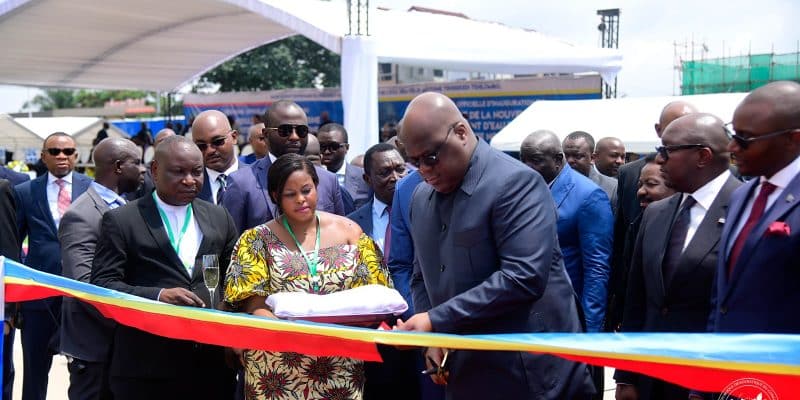The Water Distribution Company (REGIDESO) is strengthening the water supply in the Ngaliema commune of Kinshasa, thanks to the Binza Ozone drinking water plant. The facility was recently inaugurated by the President of the Democratic Republic of Congo (DRC), Félix Antoine Tshisekedi Tshilombo.
The Binza Ozone drinking water plant is now operational, after three years of work. The plant was recently inaugurated by the President of the Democratic Republic of Congo (DRC), Félix Antoine Tshisekedi Tshilombo. The facility, located in the commune of Ngaliema to the west of Kinshasa, has a production capacity of 110,000 m3 of water per day.
The plant will enable the supply of 1.5 million additional customers of the water distribution company (REGIDESO), notably in the districts of Binza-Ozone, Mbudi, Lutendele, Ma Campagne, Météo, Binza-Delvaux, Djelo-Binza, Ngomba-Kinkusa, Kimbuala, C. P.A in Malueka (Don Bosco), Kintambo, and part of Selembao (Cité verte, Badiadingi, Camping, Kitokimosi, Cité Mama Mobutu, Kimbondo and Mitendi).
World Bank funding
The Chinese company Weihai International Economic & Technical Cooperative (WIETC) built the new plant that treats water from the Congo River. The raw water is transported to the water treatment plant via an 805 mm diameter pipe over a distance of 3 km, passing through the Colonel Tshatshi camp. This is a military camp located in Ngaliema, a council to the west of Kinshasa.
The World Bank financed the work on the new plant via a $72 million loan. The Binza Ozone drinking water plant is one of the components of the Urban Drinking Water Supply Project (PEMU) underway in the DRC. The initiative aims to increase sustainable access to water in selected urban areas and improve the efficiency of Regideso through the rehabilitation of existing pumping stations, the reinforcement of the N’Djili plant’s water transfer line over a distance of 18 km, the rehabilitation of 120 km of secondary and tertiary network pipes, and the construction of new connections.
Read also –
In addition to Kinshasa, Pemu covers the cities of Lubumbashi in the south and Matadi in the west of the DRC. In 2021, barely 52% of the population will have access to drinking water in the central African country. Yet, according to the United Nations Children’s Fund (UNICEF), the country has more than 50% of the African continent’s freshwater reserves thanks to its many lakes, the Congo River and its tributaries.
Inès Magoum






